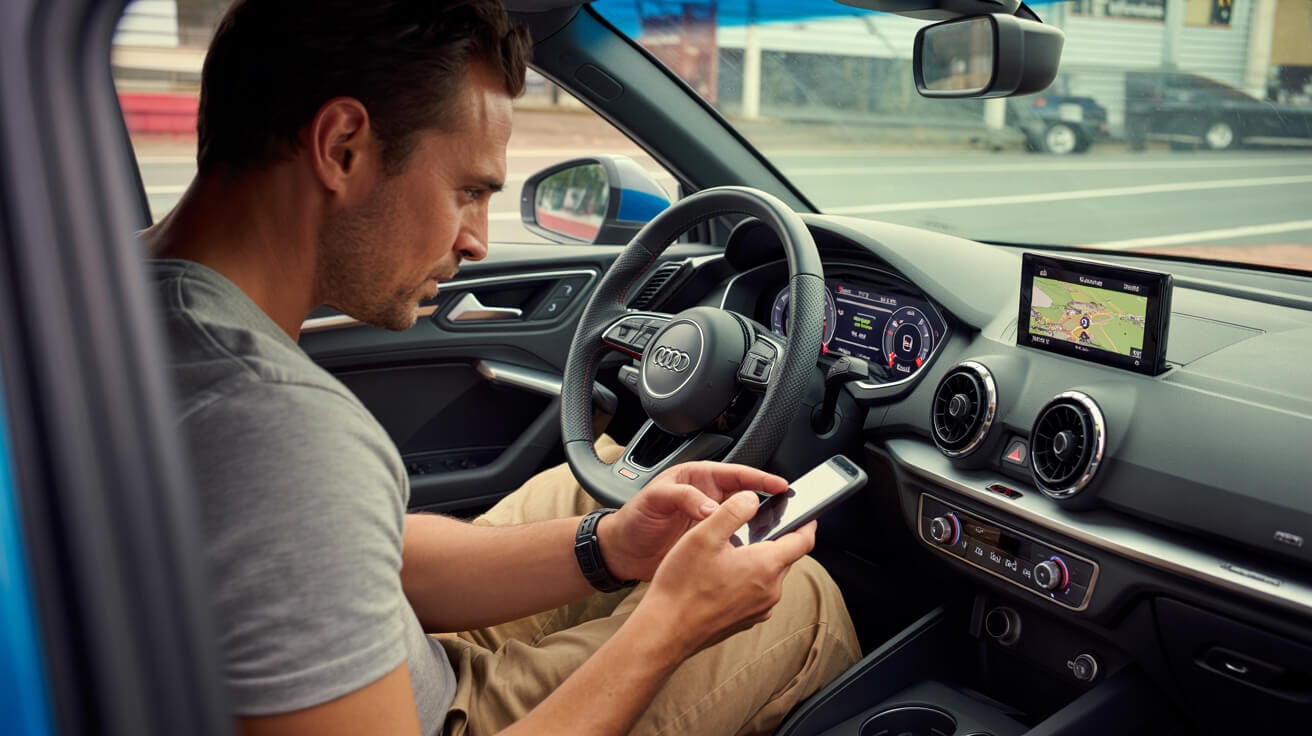1. What Is a Car Immobiliser and Why Does It Matter for UK Drivers?
A car immobiliser is a built-in security system that prevents your car from starting unless it recognises a unique key, fob, or digital credential. Since 1998, UK law requires every new car to include an immobiliser as standard. This technology acts as the ultimate anti-theft barrier, making your car far tougher to steal and often reducing insurance costs.
Car immobilisers automatically check for an authorised, programmed device every time you start your car. If the device matches your vehicle’s memory, the immobiliser allows the engine to start. If there’s no match, the system blocks ignition, stopping hot-wiring, key copying, or digital relay tricks that thieves use.
Car immobilisers give you daily peace of mind—your car only moves when you say so.
How Does an Immobiliser Actually Stop a Thief?
Every start command checks for a unique digital code. The car and key quickly share encrypted information behind the scenes; only when the match lines up does the engine come alive. Thieves can’t just copy a key or override the wiring—without the right credentials, even direct access to the ignition won’t work.
Your immobiliser is always on guard and keeps thieves at bay without any extra steps from you.
Why Should You Check the Immobiliser When Buying a Used Car?
Whenever you buy a used vehicle, check that each supplied key or fob locks, unlocks, and starts the engine. Warning lights for the immobiliser or glitches with any device should prompt an expert diagnostics check. Well-kept immobiliser records and a working system not only protect your investment but are often required by insurers if a claim ever comes up.
When you tick off the immobiliser in your purchase process, you avoid headaches and keep your car coverage watertight.
2. How Today’s Immobilisers Work: Signals, Rolling Codes, and Encryption
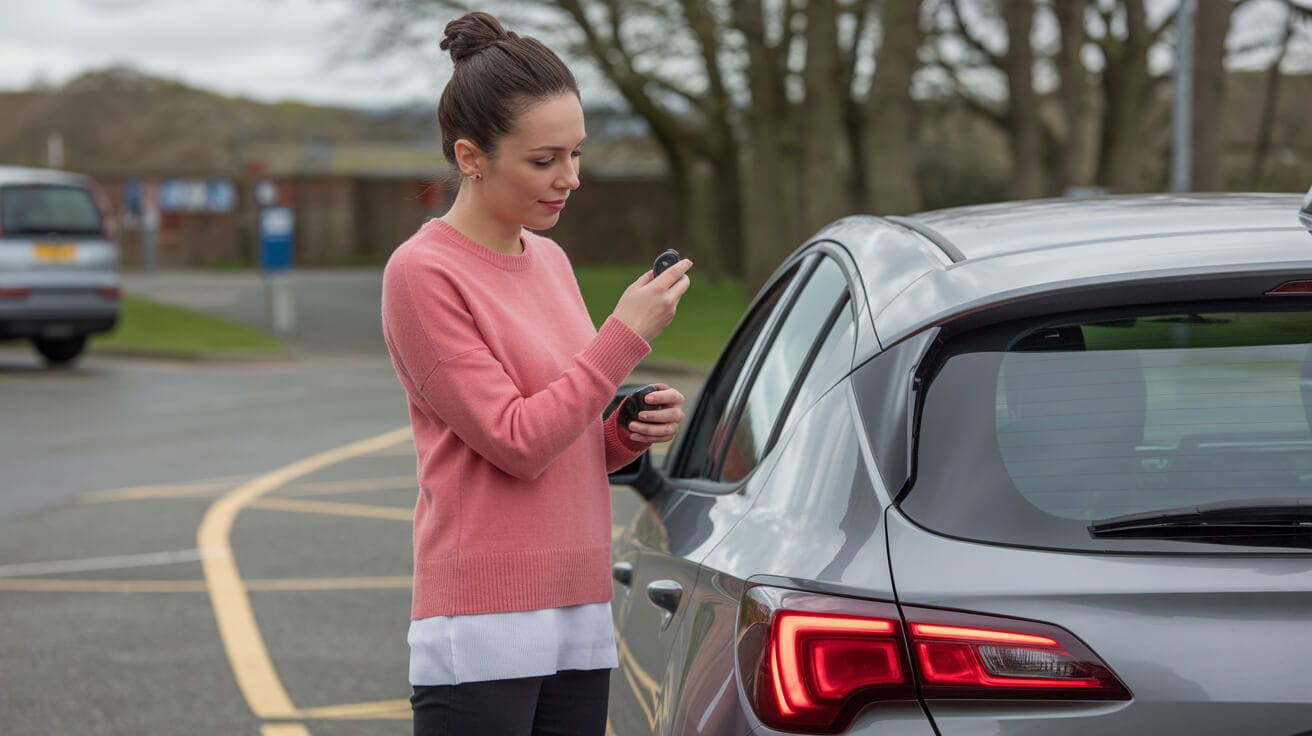
Modern immobilisers rely on encrypted digital “conversations” between the car and credentials like keys or digital devices. Every time you unlock or try to start the car, your vehicle sends a low-frequency signal (typically 125kHz) that “wakes up” the key or fob. The device must respond with the right rolling code—a unique code that changes with every use. More recent cars add Bluetooth Low Energy (BLE), Near Field Communication (NFC), or Ultra-Wideband (UWB) for added strength.
Rolling codes and encryption mean that every handshake between car and device is unique—making it nearly impossible for thieves to reuse or intercept codes.
What Is the Actual Verification Process Each Time You Start Up?
Your car’s security modules send out a signal for confirmation. The key or device responds instantly with an encrypted code—matched and checked in a flash by your car’s network. Only a perfect match allows the ignition and starter to operate. All this happens in fractions of a second, every time you use your car.
Each handshake is tracked, unique, and logged—defeating key copying or relay attacks.
How Do Modern Systems Block Cloning and Relay Attacks?
Thieves try to clone keys or extend the signal around your home for a relay attack. Today’s immobilisers counter this by using short lived codes, location proximity checks (with UWB or BLE), and time-limited windows so only an authorised device in the right place and time can start the car. The system notices anything off-pattern, blocks the attempt, and records the event for evidence.
This technology puts a formidable wall between your car and organised crime.
3. Keys, Fobs, Credentials, and Digital Entry: Your Car’s Security Chain
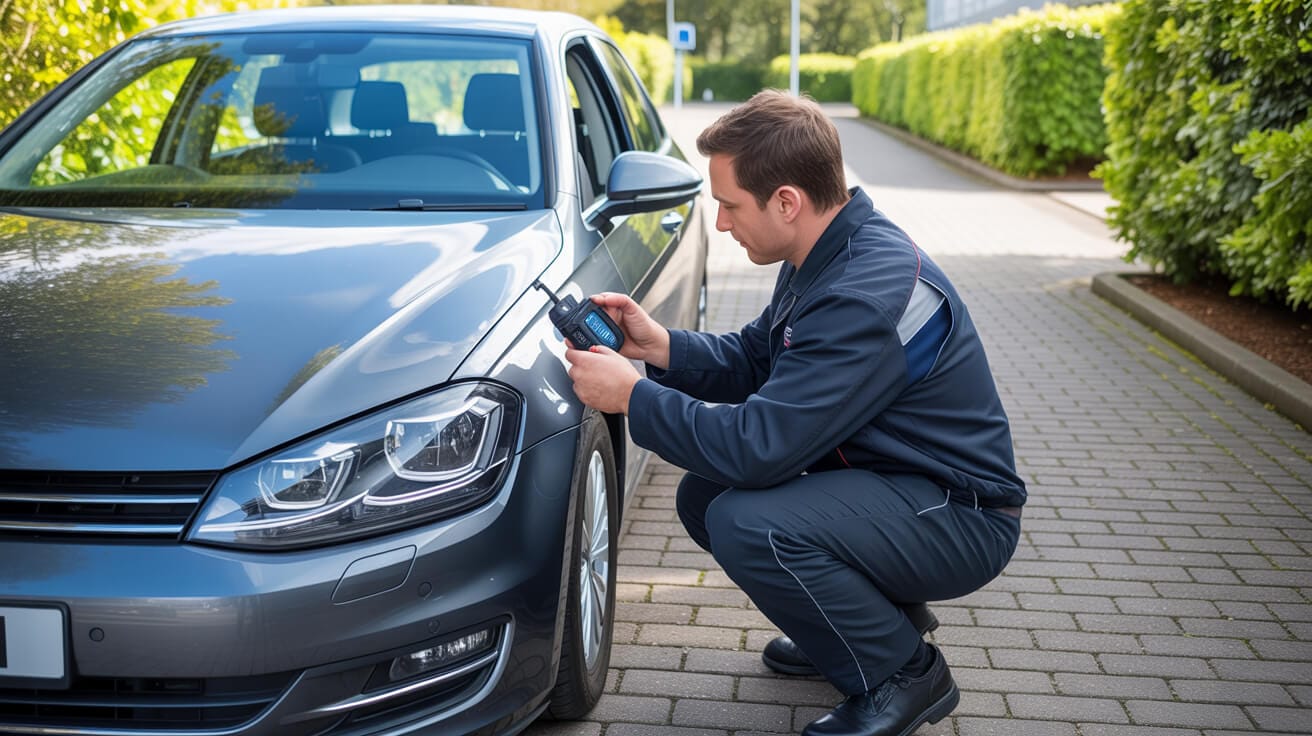
A car’s immobiliser depends on more than a key—it’s a chain of credentials, each designed to be unique and trackable. UK makes use specialised key types like HU66 (VW/Audi), HU101 (Ford), HU92 (BMW), or NSN14 (Nissan), and advanced chip sets (ID46, ID48, 4D, and others). Many newer cars now use digital credentials on smartphones or protected apps.
Every programmed key or device is recorded in your car’s control modules, producing an audit-ready log that is the backbone of your car’s security.
Why Does It Matter If a Key or Fob Is Added, Lost, or Replaced?
Lost a key or need a spare? Every new credential added to your system must be programmed and logged by an authorised locksmith. This process removes old or lost devices from your car’s memory, preventing them from being used in future attacks. Auditable programming, as carried out by professionals like Autolocks Ltd, also preserves your insurance compliance.
Professional record-keeping ensures that only your approved keys or fobs can access or start your car—no surprises, even if you bought second-hand.
What Risks and Protections Are Involved with Digital Keys?
Digital keys and app-based systems provide the same protection, but the stakes are higher. Provisioning or revoking a phone as a key requires strict checks—ID verification, encrypted app registration, and audit logs. This is why you should always use a specialist with authorised tools and clear documentation for any digital access change.
As digital access grows, your audit trail replaces the brass key—so insist on visible, logged proof every time.
4. From Unlock to Engine Start: The Security Control Chain
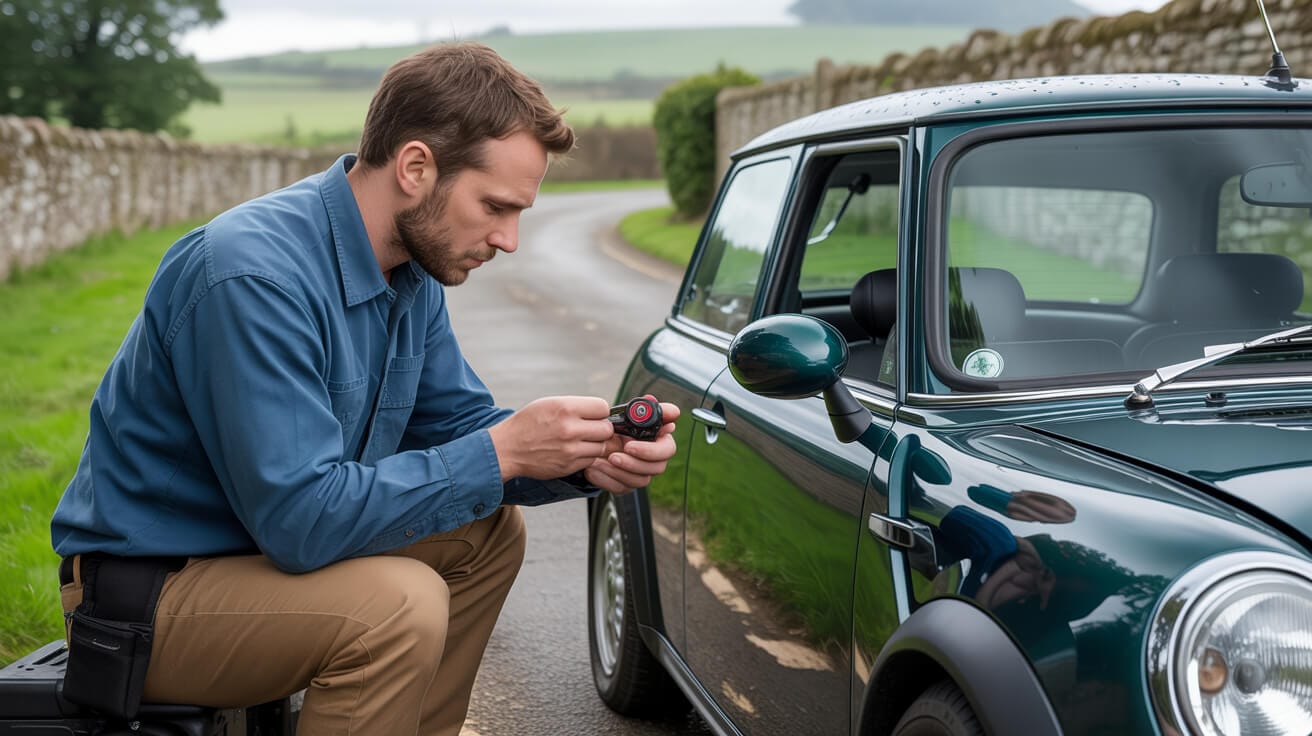
Unlocking your car and starting the engine isn’t a single-step process anymore. Instead, it’s a chain of security checks, each verified by different modules and networks. Physical access (door handles, latches) is just the start; control modules (Body Control Module, Door Control Module), secure digital handshakes, and authenticated network messages (CAN, LIN, or Ethernet) must all succeed before the ignition releases.
This is why even after gaining entry, a thief can’t simply start your car—if any stage fails, the system refuses to enable the engine and logs the event for proof.
What Are the Main Steps from Unlock to Engine Start?
- The door handle or remote triggers a signal—your key or phone must wake up and identify itself.
- Secure digital codes bounce between the key/device and the car across dedicated networks.
- The car’s modules agree—all codes, credentials, and network checks are verified. Only then does the engine start.
- Each stage is logged for your records and your insurer’s confidence.
Think of it as a digital relay—every step must hand off cleanly or the whole system holds firm.
How to Recover After System Changes (Battery Swaps, Software Updates)?
When your car’s battery is replaced or software is updated, immobiliser synchronisation can occasionally be lost. Keys or fobs may temporarily stop working or trigger warning lights. Professional locksmiths have diagnostic gear to resynchronise all devices and resolve any faults on the spot—without damage or guesswork. The technician should then demo all key features and provide an updated, signed record.
This process ensures your car is always protected, and any changes are fully traceable for both you and your insurer.
5. Attacks, Failures, and Preventing Immobiliser Problems
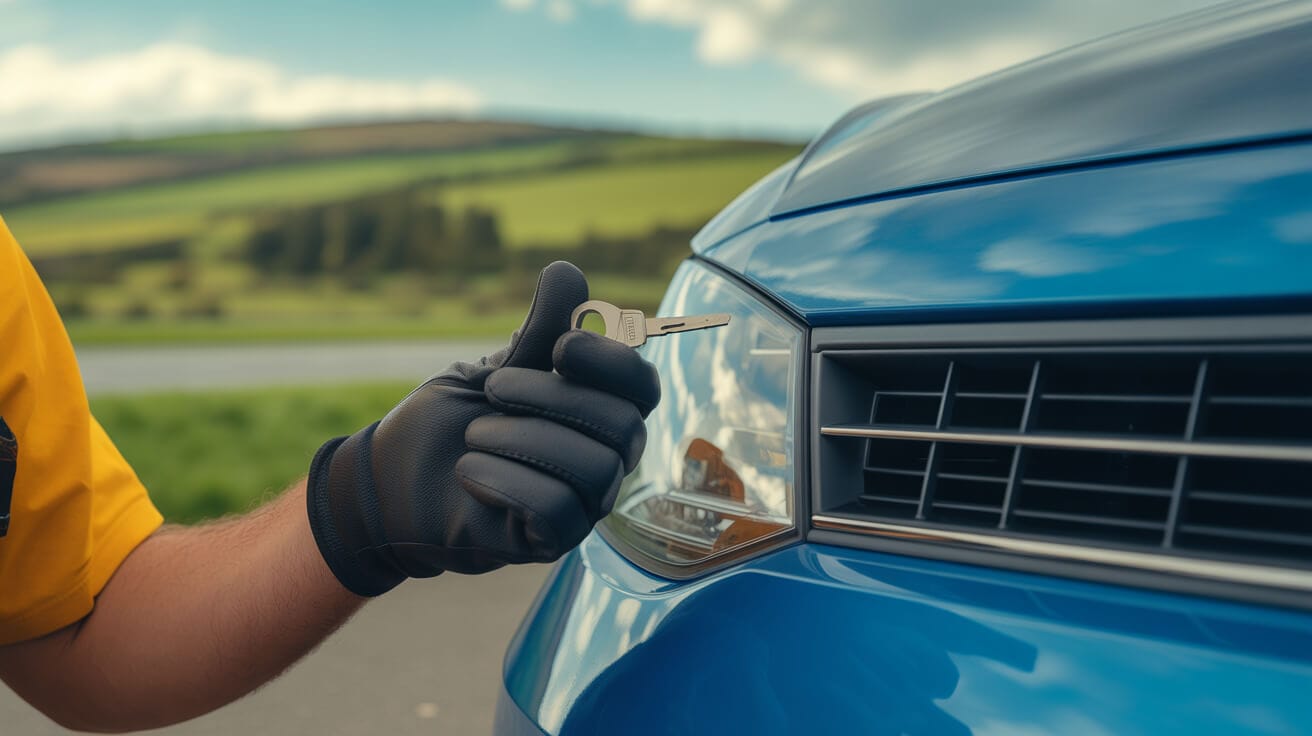
Car immobilisers battle not only thieves using technology but also everyday wear and electrical stress. Attacks like relay boosting are defeated by rolling codes and signals that can’t be copied or extended. But old keys, weak batteries, connector corrosion, broken wires (especially in door hinges), or interference from urban radio noise can all disrupt your system’s chain and cause immobiliser faults or lockouts.
At Autolocks Ltd, every repair is non-destructive, specification-led, and produces a full digital record so your warranty and ownership never come into doubt.
Proactive attention saves you from breakdowns, surprise costs, and even insurance difficulties.
What Are the Main Threats and How Can Drivers Respond?
| Threat | Weakest Link | Best Defence |
|---|---|---|
| Signal Relay | Key signal interception | Proximity check; rolling codes |
| Code Cloning | Lost or unlogged keys | Immediate removal, audit log |
| Old Remotes | Static (non-rolling) code | Firmware update, reprogramming |
| Battery Issues | Weak fob/vehicle battery | Test/replace batteries regularly |
| Mechanical Wear | Worn keys/cylinders | Early inspection, pro servicing |
A stitch in time—checking credentials, updating fobs, scanning for error codes—prevents 90% of unwanted immobiliser headaches.
Why Regular Checks and Diagnostics Pay Off
Testing all keys and devices, watching for dashboard warning lights, and asking for a full digital check at each service visit catch trouble before it strands you. Industry-standard diagnostic tools rapidly scan for faults missed by visual checks, ensuring your system is always fully synchronised and compliant. Documented scan results also strengthen your claim if there’s ever a dispute over access or stolen vehicles.
Looking after your car’s security system is as crucial as oil changes or brake checks—and saves you real money over time.
6. What to Expect When Booking Professional Immobiliser Service
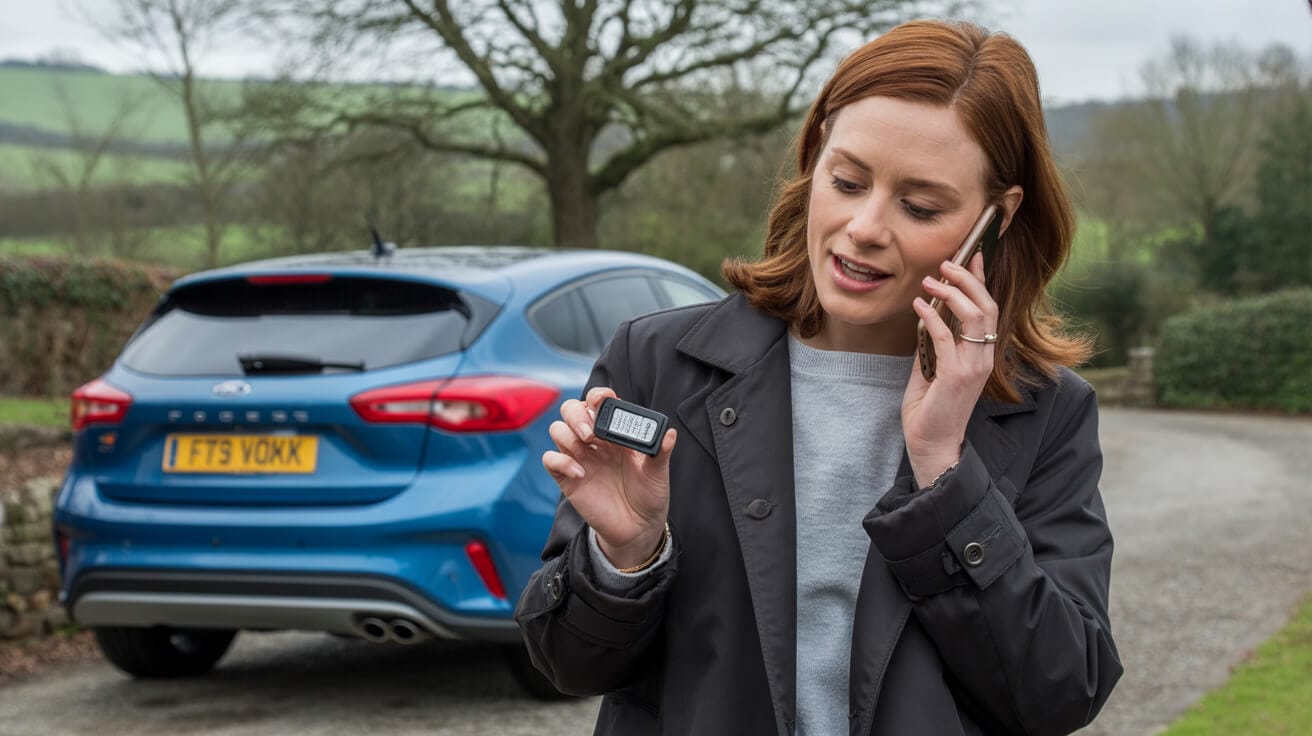
When you call a professional like Autolocks Ltd, you receive a transparent, evidence-driven service from start to finish. On arrival, technicians confirm your identity and vehicle, outline the work and costs, and only use manufacturer-approved, non-destructive methods for assessment and programming. Each step is documented, from system scans to demonstration videos or photo logs, and you get secure aftercare support.
Professional service means you are never left guessing about whether the fix is correct, compliant, or legitimate.
What Are the Key Stages of a Secure Immobiliser Appointment?
Step 1: Confirm your identity, V5C, and consent
Step 2: Receive fixed-price, risk-clarified quote
Step 3: Non-destructive diagnosis with specialist tools
Step 4: Programming, resynchronisation, and audit log update
Step 5: Final demonstration (lock, unlock, start, alarm) plus aftercare advice and record
You leave with a lock/unlock/start demo and a digital or paper copy of the entire work history—key assets for resale or insurance.
Why Are Professional Documents a Dealbreaker?
Proper service creates a trusted record that insurers and buyers recognise. Audit-grade logs confirm compliance, lower your premium, and allow for quick claim approval. This accountability, championed by specialists like Autolocks Ltd, protects your rights and strengthens your negotiating position as a car owner.
Thorough documentation bridges the gap between security, resale value, and insurance savings.
7. Regulation, Insurance, and the Economics of Immobiliser Security
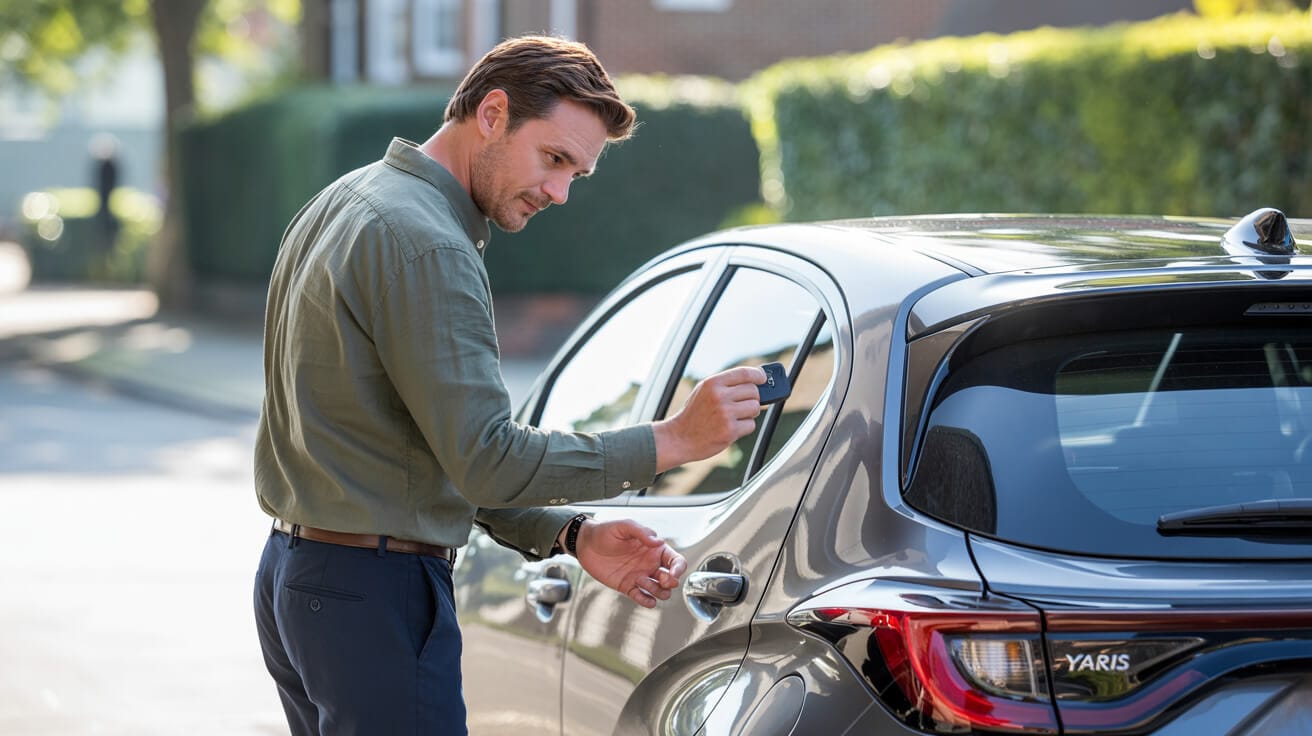
Every new car in the UK has had immobilisers by law since 1998—and insurance details follow suit. Only recognised, professionally serviced or factory systems (approved at Category 2+ standard) are counted for security and claim eligibility. If you ever need a claim for theft or vandalism, lack of acceptable immobiliser evidence often means denied or disputed payout.
Autolocks Ltd meets all regulatory, insurer, and ISO/UK compliance criteria—every job produces transparent, ISO-filed documents and an audit trail you can bank on.
Below, spot how common immobiliser setups compare for insurance compliance and the impact on premiums and claims:
| Immobiliser Type | Potential Premium Discount | Proof Required | Risk If Missing |
|---|---|---|---|
| Factory Cat 2+ | 10–20% | Audit/service log | Claim denial, surcharge |
| Approved Aftermarket | Up to 10% | Installer certificate | Claim dispute/refusal |
| None/DIY/Unknown | 0% | Not valid | Policy voided |
Audit-proof records and ISO-aligned service keep your car fully protected and insurable.
What Are the Risks of DIY or Uncertified Immobiliser Fixes?
If an immobiliser is installed, replaced, or serviced without professional credentials or adequate documentation, most UK insurers refuse to honour theft-related claims. Always require a formal certificate or logged service record for every immobiliser job—Autolocks Ltd provides this as standard. Make it a non-negotiable in choosing your service provider.
Without official records, your car’s security is unverifiable where it matters most.
8. Book Secure, Audit-Ready Immobiliser Service with Autolocks Ltd Today
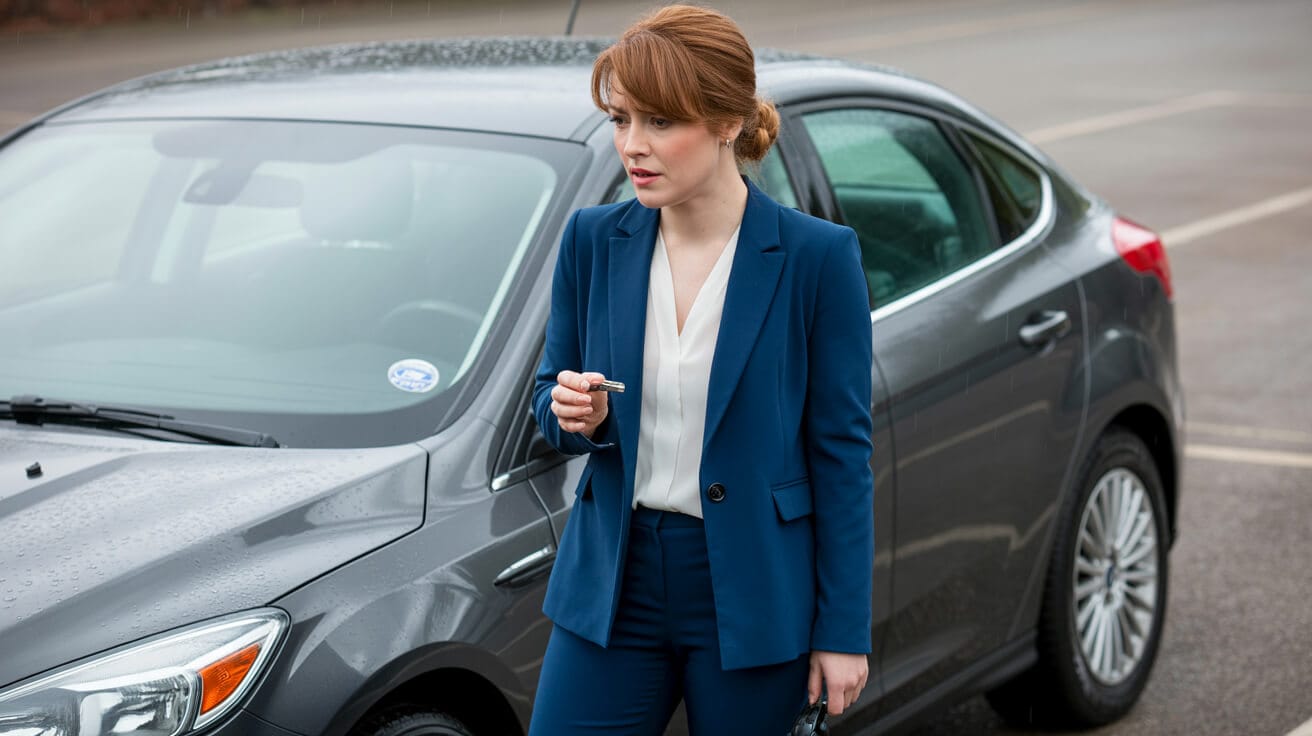
Don’t leave your car’s security—or claim eligibility—to chance. If you suspect an immobiliser fault or have lost credentials, Autolocks Ltd delivers nationwide service led by trained, compliant engineers. Our team arrives with the right tools, up-to-date van stock, and full documentation protocols for your make and model.
From identity confirmation through non-destructive diagnostics, credential update, and a post-service demo, you receive a complete audit log—digital or paper—showing exactly what was done, with every step recorded. Your records are insurance-ready, supporting any claim or sale without stress.
Choose Autolocks Ltd when your vehicle’s security, insurance eligibility, and peace of mind are at stake. If you value audit-grade proof, technical precision, and nationwide support, we’re ready to help.
Frequently Asked Questions
How do immobilisers really protect your car, and what does UK law require from owners and locksmiths?
A true immobiliser does more than make noise—it acts as an invisible gatekeeper, blocking the fuel or starter with a unique code handshake between your key and the car’s control unit. Every time you unlock or start your vehicle, the system checks for that one-of-a-kind signal. If it’s not there, nothing—no matter how skilled the thief or how creative the attack—moves beneath your bonnet.
Since 1998, UK law has mandated factory immobilisers on all new vehicles, after years grappling with the “hotwire” epidemic. Modern keys—ID46, ID48, 70/80-bit and their cousins—communicate cryptographically with modules like the BCM, shutting down theft tactics that ignore smarter security.
True peace of mind isn’t in loud sirens—it’s in an engine that answers only to you.
Your insurer doesn’t take your word for it. If you can’t show working keys, a clean immobiliser warning lamp, and a record of professional programming, your policy may not cover theft. Autolocks Ltd contacts every job with an audit-backed handover: completed system test, evidence photos, and logs storing who, when, with which tool—because your claim and your safety start with proof.
How do you know your immobiliser still works post-service?
Always insist on live demonstration and a signed programming log after any key or module change—no log, no coverage, no compromise.
Which signals and chip generations make or break your car’s security today?
Modern immobilisers choreograph multiple signals—LF 125kHz pulses for close-proximity start, EU433 MHz for remote locking, and digital protocols, like BLE or UWB, for smart/phone keys—to ensure only the right device wakes and authorises your engine. New keys encrypt fresh codes with every attempt. Tech-savvy thieves try replay and relay attacks, but rolling-code chips like ID48 or Toyota 80-bit constantly mutate the handshake, keeping the lock one step ahead.
Cars at highest risk? Anything with static codes or older chips still in circulation. Professional criminals have hardware for legacy systems, but updating to rolling-code chips and periodic digital key cycle-outs makes the attack window razor-thin. UK pros like Autolocks Ltd audit every chip’s “family” for your car—then programme using encrypted logs and compliance-proofed tools, so even an attempted hack leaves no permanent trace.
Security is built on evolution—what worked on last year’s cars won’t break in today.
Digital keys—once science fiction, now standard on high-value trims—register every pairing/revocation, with live logs you control. That means your phone-as-key gets the same audit grade as a spare fob or fleet batch, reducing loss or account breach panic.
Can DIY battery swaps or software updates break the chain?
Yes—unre-synced keys can leave gaps a thief might exploit. Always confirm every key works after maintenance, and get a traceable receipt for any code change.
Which UK key profiles, fobs, and chip brands truly raise (or lower) your theft risk?
The foundational UK profiles—HU66 (Volkswagen Group), HU101 (Ford/JLR), HU92 (BMW/MINI), and NSN14 (Nissan)—anchor to chip generations like ID46/48, 4D, or Toyota’s long code sets. These are the backbone of reliable security—miss the match and you risk lockouts, immobiliser faults, or worse: “ghosted” keys that look real but leave you stranded.
An overlooked chip or fob is more than a nuisance—a mismatched profile can open doors to thieves and shut you out when it matters most.
Remote fobs function using rolling codes—dead coin-cells, a dropped sync, or an unregistered transponder can suddenly block starts even while doors unlock. The right fix always means check battery, check chip, sync the codes—then document every programming event. Autolocks Ltd closes every job with physical demo and digitally stamped logs.
Business and fleet drivers must go further: every digital key issued is traced to the user—guest passes, revocations, and spares must all be logged to pass compliance and warranty tests. Secure storage (RFID pouch, off-site backup, password lock) plus a credential ledger is standard for full coverage. Insurers now ask: can you prove how, and to whom, each key was handed over?
What’s the one practice that prevents key mixups and credential loss?
Physically separate spare storage and routine, signed logs for every key or fob issued, revoked, or replaced—especially as fleets cycle through drivers or new tech.
How does the immobiliser’s “control chain” decide if your car starts, and what should you verify after service?
Unlocking your car triggers a sequence: door access wakes the low-frequency antenna, your key’s chip returns a rolling code, and the immobiliser (often the BCM or gateway) checks that code against an authorised list. Passes every checkpoint—credential, interlock, and status—and the ECU allows the starter relay to power up. Trip any failsafe—wrong code, missing safety signal, unknown key—and the engine remains silent.
Your car’s modules (body control, door, gateway, powertrain) are linked via networks like CAN or LIN. This structure isolates and authenticates commands so “jump attacks” between systems rarely work. Interlocks matter: if the brake or gear input fails, the immobiliser blocks the start, no exceptions.
Autolocks Ltd’s standard is not just to “make it work,” but to photo-document every step—keys in, codes read out, start attempted, system lamps checked, and logs created. For leased, business, or security-sensitive vehicles, this full-audit process turns disputes and delays into signatures and solved claims.
The real difference is proof—your car’s control chain should be as unbreakable as its metal.
How are module changes, battery swaps, or software updates safely completed?
Insist on a step-by-step reconnection—pair keys, run full system diagnostics, get a digital log, and test every input (key, brake, gear) before driving off.
Where do most immobiliser failures or security breaches start, and how do you put a stop to them before it’s too late?
Attacks and failures don’t just come from clever thieves. Unshielded key storage, aged or mismatched transponders, neglecting post-maintenance sync, and environmental interference (shop RFID gates, masts, or electrical storms) can all trigger no-starts or even compromise your safety. New attack tech—relay boxes, code grabbers, and “signal amplifiers”—feeds on stale codes or forgotten security layers.
The most common owner missteps? Leaving the backup key near a front door window, using an unlogged programmer, or cutting corners on compliance. Each shortfall is a gap, and it’s gaps—not brute strength—that smart attackers exploit.
It’s the details skipped in a hurry that turn into the problems money and insurance can’t just fix.
Autolocks Ltd only uses traceable, compliant tools—every programming, repair, or audit leaves a digital signature and is supported with photos and logs, ensuring your next insurer or fleet partner trusts your security, not just your storey.
What habits keep insurance and warranty claims smooth?
Schedule quarterly log reviews, keep backup keys in RF-shielded, offsite storage, and refuse work from anyone who won’t sign and digitally log every service.
How can you guarantee your locksmithing job is traceable, compliant, and bulletproof—and why do top fleet managers and insurers treat Autolocks Ltd as the UK standard?
Booking with Autolocks Ltd isn’t just about opening a door—it’s total risk reduction. From the first ID check and geo-tracked arrival to the final audit-pack with signed and photo-logged credentials, every job is engineered to maximise compliance, proof, and protection. Vans are loaded for UK coverage, and technicians average 60–90 minutes urban response, with every action non-destructive and GDPR-compliant.
Insurers and procurement teams are clear: no digital, audit-grade handover, no green light—especially as fleet and keyless tech demand real logs for every key, every user, every handover. Autolocks Ltd leads with a unique audit trail: tool records, job steps, battery logs, module and fob programming, plus a signed proof-of-work for insurance and NPS reviews.
Security is what you can prove, not just what’s promised—track every step and you’ll never be caught off guard.
Aftercare isn’t left to chance. Every customer leaves with warranty details, emergency contacts, and a rolling invitation for system health reviews—a safety net rare in the industry. When your reputation or business is on the line, nothing less is enough.
If you care about making your vehicle truly secure—and want compliance and peace of mind to become your competitive edge—book Autolocks Ltd. Security that’s documented, demonstrable, and ready for the next challenge.



